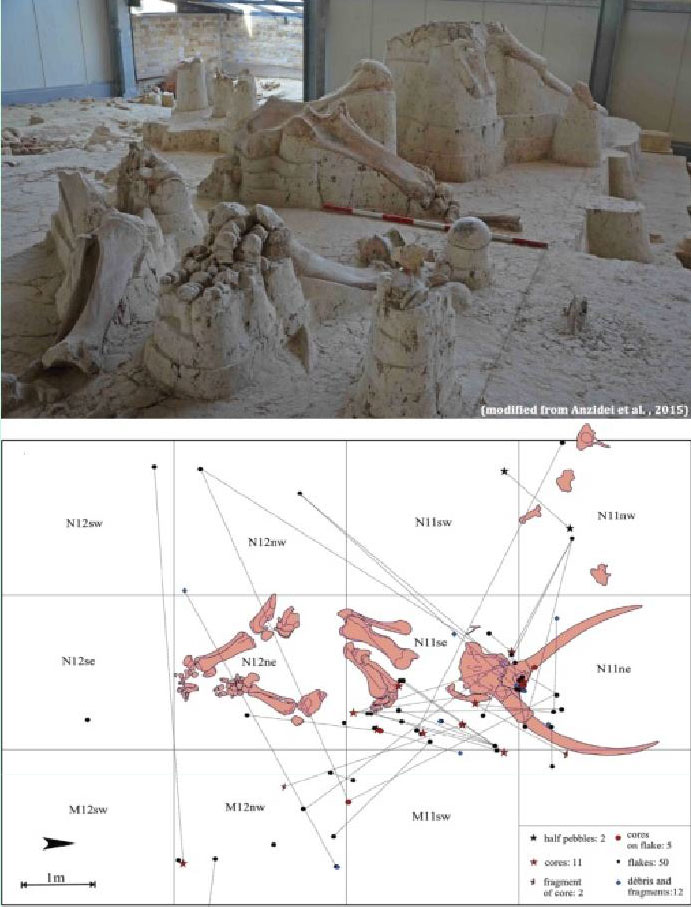“Hominins and Elephants in the Pleistocene: a Lesson from the Mediterranean” is the subject of this Palaeolithic Seminar, which will be presented by Maria Rita Palombo (Professor at La Sapienza of Rome) and Eugenio Cerilli (Muzeo Nationale Romano e l’Area Archeologica di Roma).
The hominin-elephant interaction during the Lower Palaeolithic is an intriguing issue that has been the subject of a number of studies, but the multifaceted aspects of the interaction dynamics are still imperfectly known and divide most of researchers dealing with this topic. Various sources of evidence point out the contemporaneous presence of Palaeolithic hominins and proboscideans in Early and early Middle Pleistocene in Africa and Eurasia in different ecosystems, environments and climatic contexts. The hominin exploitation of elephant carcasses, however, is usually difficult to ascertain due to the rarity of well identifiable cut-marks on the elephant bone surface, while the contemporaneous presence at any site of hominin artifacts and elephant bones (even if broken), may sometimes be accidental or affected by taphonomic biases.
To avoid misinterpretations, the best analytical approach to verify whether the presence of artifacts should be actually connected with the presence of the carcass remains or not, is to perform a use-wear analysis of the lithic implements. This may enable us to identify the processing of animal material by cutting or scraping soft as, for instance, meat and hide. It is however indubitable that a number of Early and early Middle Pleistocene sites document some butchery activities on elephant carcasses belonging to different proboscidean species and phyletic lineages.
Moreover, although each site has its own peculiarities, the same behavioural strategies seem to be repeated through time and maybe across space. Our aim is to provide an inventory and a critical overview of the main sites from the Mediterranean area (North Africa, Arabian, Peninsula, and South Europe) where a hominin and proboscideans coexistence has been firmly documented, to summarize the available evidence of elephant butchery activity, and to highlight similarities/differences in hominin behavior (if any) among elephant butchery sites in view of environmental context, resource availability, and fauna functional diversity.
To facilitate the comparison, sites have been grouped in three main categories, based on the completeness of the elephant skeletons. 1) Sites with single carcass found in association with stone artefacts, and with some bones in anatomical connection and few others dispersed within a short distance; 2) Sites where a single carcass was butchered, but where the skeleton bones are characterized by a high degree of disarticulation, tough bones may occur dispersed over a small area; 3) Sites documenting a polyphasic accumulation of portions of carcasses or individual bones.
The event is organized with the contribution of the Irish Institute of Hellenic Studies at Athens.
About the Palaeolithic Seminar
Organisers: Georgia Kourtessi-Philippakis – National and Kapodistrian University of Athens; Νena Galanidou – University of Crete
The Palaeolithic Seminar is a joint initiative of the National and Kapodistrian University of Athens and the University of Crete (Departments of History and Archaeology), the Palaeolithic Seminar aims to bring Palaeolithic Archaeology closer to its specialist and wider audience. It aspires to become a forum where the results of recent work in the field and the latest theoretical trends within the discipline are presented and discussed.
